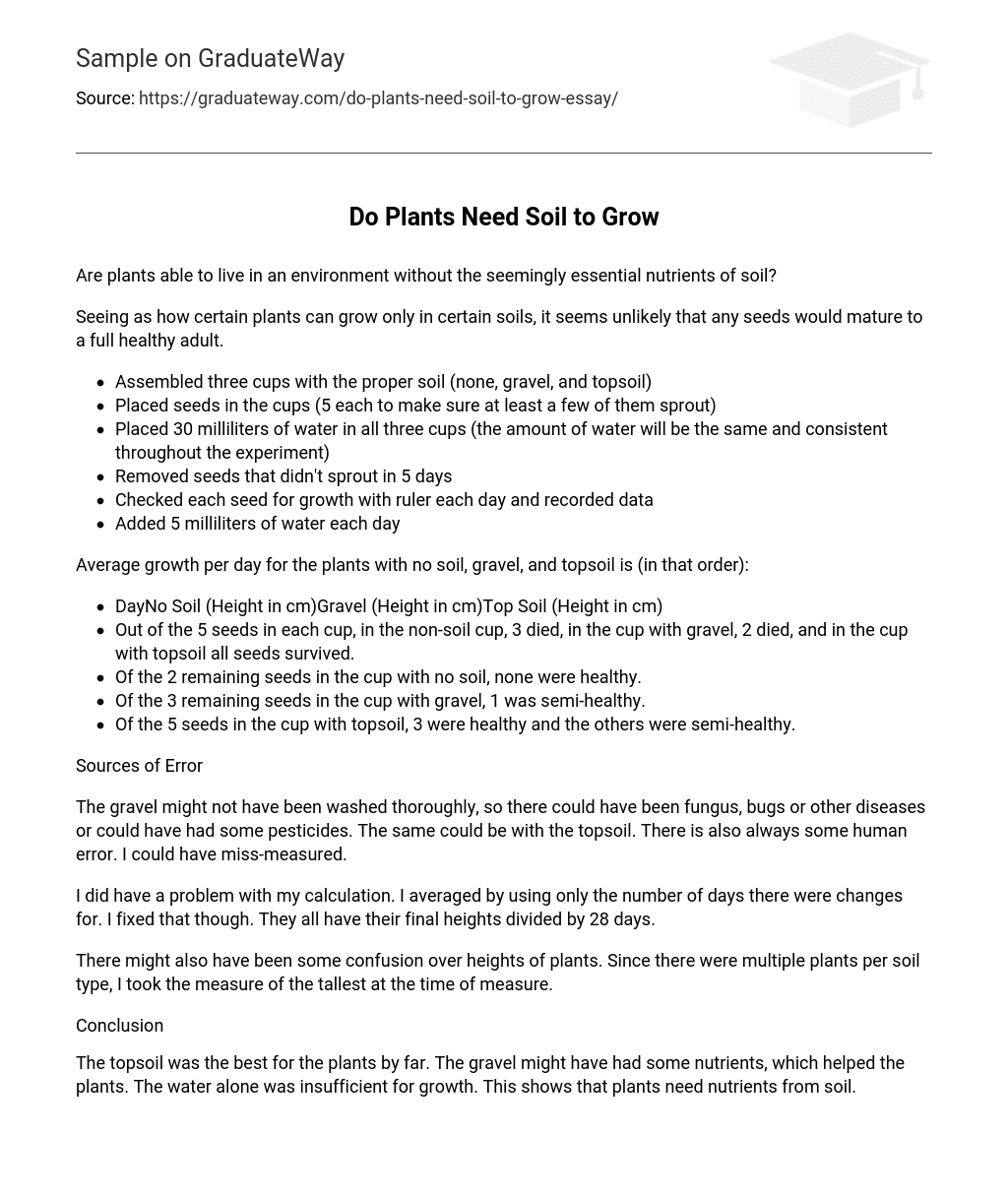Are plants able to live in an environment without the seemingly essential nutrients of soil?
Seeing as how certain plants can grow only in certain soils, it seems unlikely that any seeds would mature to a full healthy adult.
- Assembled three cups with the proper soil (none, gravel, and topsoil)
- Placed seeds in the cups (5 each to make sure at least a few of them sprout)
- Placed 30 milliliters of water in all three cups (the amount of water will be the same and consistent throughout the experiment)
- Removed seeds that didn’t sprout in 5 days
- Checked each seed for growth with ruler each day and recorded data
- Added 5 milliliters of water each day
Average growth per day for the plants with no soil, gravel, and topsoil is (in that order):
- DayNo Soil (Height in cm)Gravel (Height in cm)Top Soil (Height in cm)
- Out of the 5 seeds in each cup, in the non-soil cup, 3 died, in the cup with gravel, 2 died, and in the cup with topsoil all seeds survived.
- Of the 2 remaining seeds in the cup with no soil, none were healthy.
- Of the 3 remaining seeds in the cup with gravel, 1 was semi-healthy.
- Of the 5 seeds in the cup with topsoil, 3 were healthy and the others were semi-healthy.
Sources of Error
The gravel might not have been washed thoroughly, so there could have been fungus, bugs or other diseases or could have had some pesticides. The same could be with the topsoil. There is also always some human error. I could have miss-measured.
I did have a problem with my calculation. I averaged by using only the number of days there were changes for. I fixed that though. They all have their final heights divided by 28 days.
There might also have been some confusion over heights of plants. Since there were multiple plants per soil type, I took the measure of the tallest at the time of measure.
Conclusion
The topsoil was the best for the plants by far. The gravel might have had some nutrients, which helped the plants. The water alone was insufficient for growth. This shows that plants need nutrients from soil.





